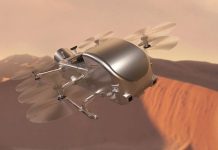Nasa successfully reboots Hubble
It has been doing its job for 31 years, sending spectacular photos of galaxies far, far away to Earth, conducting scientific research: the Hubble Space Telescope. This year, NASA had to fix several problems – most recently it was necessary to put the telescope into a kind of coma.
As announced by NASA, the Hubble space telescope was fully operational again on December 6, 2021. All cameras, sensors as well as spectrographs, and spectrometer have resumed their service and are in the process of “collecting science”, as NASA puts it.
In addition, the team responsible for Hubble has not had any synchronization problems since November 1. Further tests will be carried out and the software that controls Hubble’s instruments will be further developed and put to the test, NASA continues, even if that means that problems could arise again. The first of these updates will be delivered to the Cosmic Origins spectrograph in mid-December.
Hubble’s successor, Webb, is slated to go into space in December
After the first problems in July of this year, there were again difficulties communicating with the space telescope at the end of October. In the end, the NASA experts saw no other option than to put Hubble into so-called safety mode and switch off all instruments. Gradually they were then started up again.
NASA plans to keep Hubble in use until at least 2026. The successor – the James Webb Telescope – is scheduled to begin its journey into space on December 22, 2021, and begin service. Scientists expect many new insights into the universe from his cameras and measuring instruments, which are clearly superior to those from Hubble.

The new software is coming
“The team has not found any further problems with synchronization messages since the monitoring began on November 1,” said NASA. With the new software, Hubble should remain functional even if the messages are lost. The first instrument that the new software will get shortly is the Cosmic Origins Spectrograph. The other instruments are to follow in the coming months.




